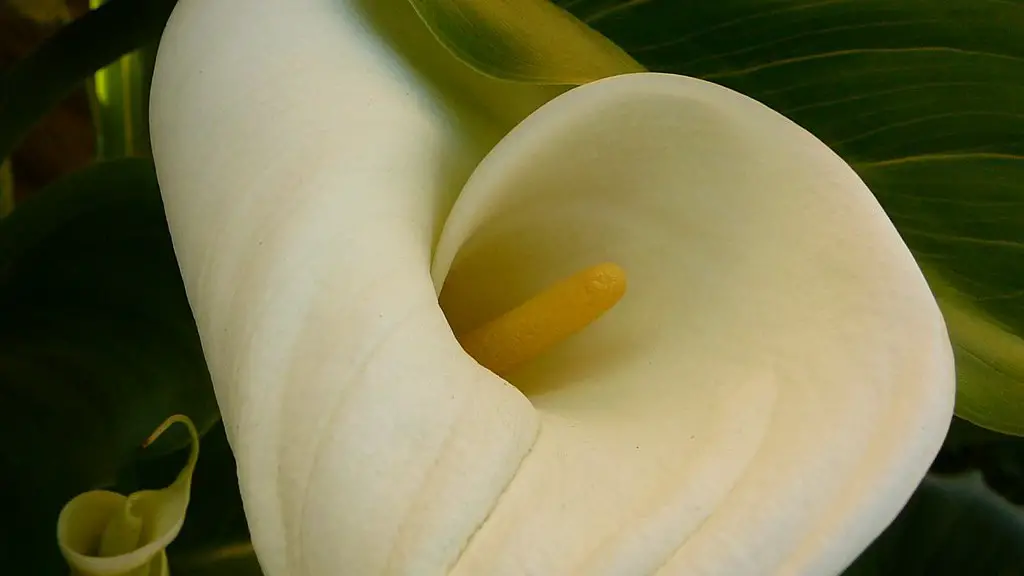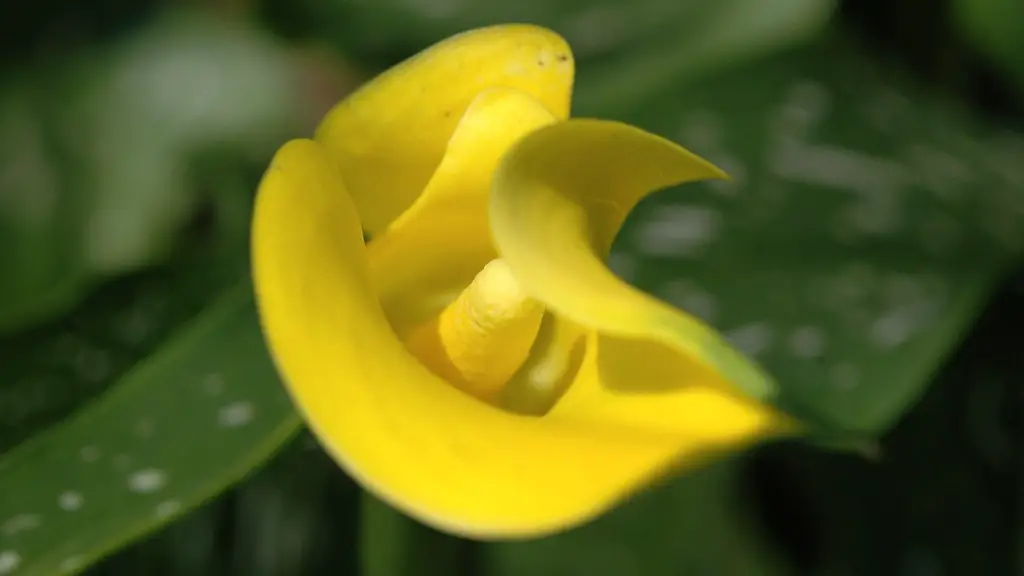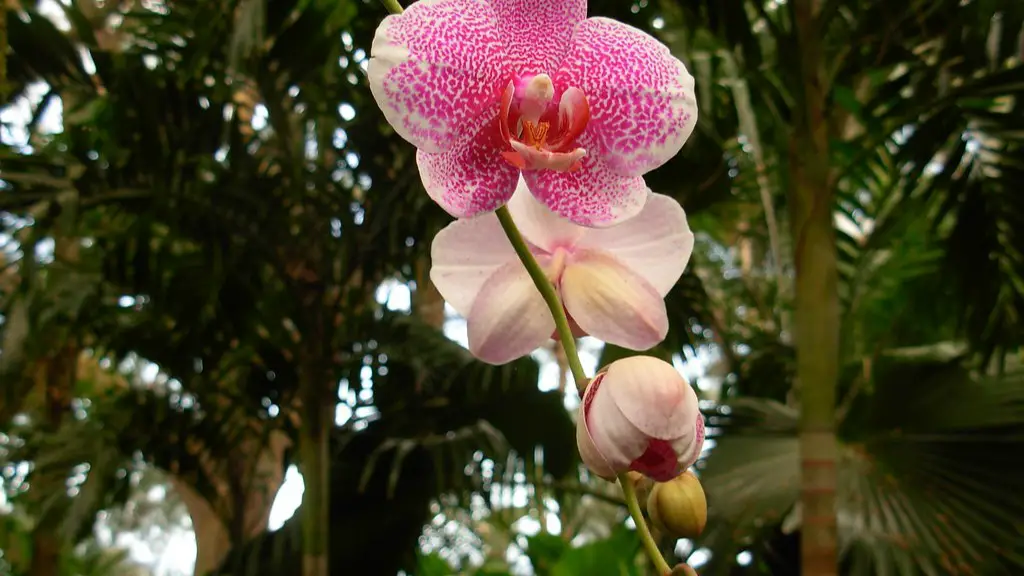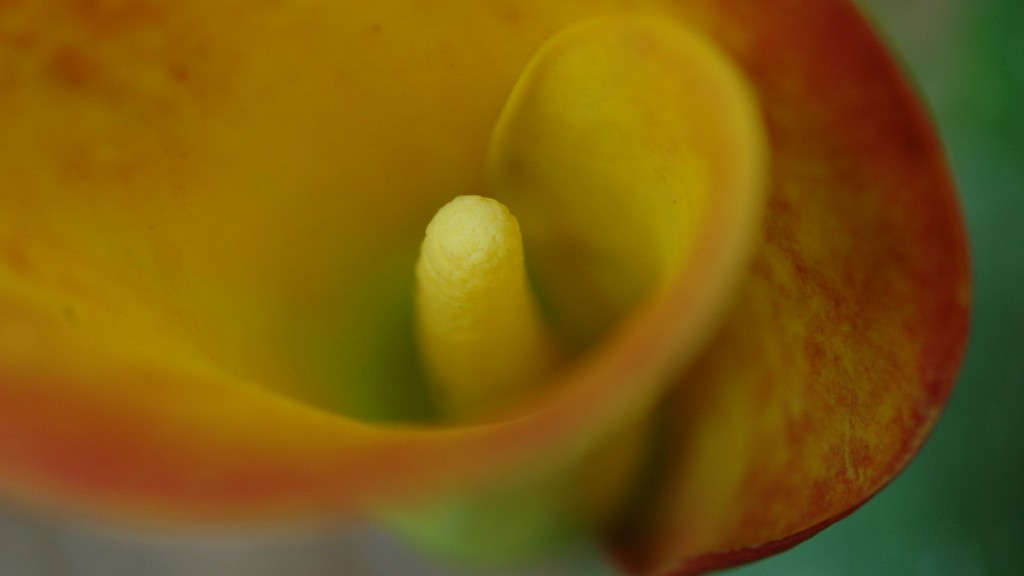Lilies are a popular flower for many gardeners because of their large, showy blooms. There are many different types of lilies, including the calla lily and the Asiatic lily. While these two types of lilies share some similarities, they can also be quite different. So, can a calla lily and an Asiatic lily live together? The answer is yes! While they may have different requirements when it comes to care, these two types of lilies can definitely coexist in the same garden.
Yes, a Calla Lily and an Asiatic Lily can live together.
What plants grow well with calla lilies?
Perennial calla lilies are beautiful flowers that add a touch of elegance to any garden. They are also relatively easy to care for, making them a great choice for beginner gardeners. When choosing companion plants for your calla lilies, it is important to select plants that will thrive in the same conditions. Some good companion plants for calla lilies planted in the woodland garden include ferns, astilbes, hostas, ligularias and impatiens. In a container, annual calla lilies combine well with petunias, dusty miller, allysum, creeping jenny, heliotrope or dichondra.
Asiatic lilies are beautiful, majestic flowers that make a great addition to any garden. They can be planted with other perennials, but it’s important to give them enough space to spread out and grow. Avoid planting anything that spreads aggressively or grows too tall, as this can shade out the lilies and prevent them from getting the sunlight they need. With a little care and attention, your Asiatic lilies will thrive and provide you with years of enjoyment.
Can you plant different lilies together
If you want to get creative with your lily garden, plant several different types! Asiatic and Oriental-Asiatic hybrids will flower in early summer, giving you a longer bloom time to enjoy. Keep in mind that some lilies are fragrant, so you may want to place them near a seating area or pathway.
When planting lilies, be sure to space the bulbs at a distance equal to three times the bulb’s diameter. This will usually be about 8 to 18 inches apart, depending on the variety. For visual appeal, plant lilies in groups of 3 to 5 bulbs. Water thoroughly at time of planting.
What not to plant with lilies?
When planning your lily garden, be sure to choose low-growing companions. Tall plants will shade the lilies and reduce the number of blooms. Underplanting the lilies with a succession of flowers will reinforce the beauty of their spectacular blooms and extend the flowering season of your mixed border.
Calla lilies are great for adding a splash of color to any garden or outdoor space. And, since they spread by creating new bulbs, they are also quite easy to control. So, if you’re looking for a plant that will brighten up your yard and is also easy to manage, calla lilies are a great option.
Do Asiatic lilies spread?
Lilies are a great addition to any garden and can be easily propagated. Asian lilies, Oriental lilies, Tiger lilies, and American hybrids can all be propagated in the garden. With a little care, lilies will quickly spread out and fill a garden bed over a few seasons.
Asiatic lilies are an easy to grow and maintain option for those looking for a lily that will come back year after year. Asiatic lily bulbs can be planted in the spring or fall, and the lilies prefer well-drained sandy or loamy soil and plenty of sunshine—about 6 to 8 hours of direct sun daily.
Can Asiatic lilies be left in the ground over winter
Lily bulbs need to be overwintered if you live in a climate where freezing can occur. Gardeners in colder climates should pull up the bulbs and save them indoors. If you treat the plants as annuals, you don’t need to worry about overwintering them.
According to horticulturists, mixing lily cultivars is not always a successful idea from a design standpoint. Each cultivar has its own height, blooming period and character, so planting together Lily varieties of varying heights or flowering season would reduce the overall effect. In a mixed border, it is better to Plant lilies in odd numbers and of comparable heights.
What to do when Asiatic lilies have finished flowering?
Lily flowers need to be removed when they fade in order to keep the plant healthy. If they are left in place, they will produce seed which takes away energy from flower production and plant growth. The flowers can be cut or pinched off, or the stalks can be cut when the blooms first open and used in floral arrangements.
Asiatic lilies should be spaced 12in (30cm) apart, while tall Oriental lilies should be spaced 8in (20cm) apart. Our Garden Planner can produce a personalized calendar of when to sow, plant and harvest for your area.
How many calla lilies grow from one bulb
Thanks for inquiring about calla lily bulbs! Given reasonably good care, each bulb should produce up to six blossoms during its flowering season. This highly depends on the variety and growing conditions.
We hope you have success with your calla lily bulbs!
Asiatic lilies are beautiful flowers that appear in clusters at the very top of the plant. This makes them ideal for cutting gardens. They usually grow 18 to 24 inches tall and form from bulbs that get bigger and better every year. Asiatic lilies are also relatively deer resistant. They are hardy from zones 3-8.
What is the best time to plant calla lily bulbs?
Calla lilies should be planted in the spring after all danger of frost has passed. In cold climates, it’s best to wait until the soil has warmed to at least 65°F. For a head start, you can plant the rhizomes in pots indoors about a month before planting them into the garden.
When choosing plants to grow together, it is important to consider compatibility. Some plants compete for nutrients or space, or they attract damaging insects or fungus. Here are some incompatible plant combinations:
Beans and onions
Tomatoes and corn
Potatoes and sunflowers
Asparagus and garlic
Celery and carrots
Eggplant and fennel
Cucumber and rosemary
Lettuce and garlic
What plants should you not plant next to each other
There are a lot of common beliefs about plant incompatibilities, but many of them are not backed up by science. Some of the more commonly believed plant incompatibilities include the following: Mint and onions where asparagus is growing Pole beans and mustard near beets Anise and dill neighboring carrots. However, there is no scientific evidence to support these claims. In fact, many of these plants can actually benefit from being grown near each other! So don’t be afraid to experiment and see what works best in your garden.
Lilies are one of the most popular flowers in the world, and they make a beautiful addition to any garden. While they can be grown in the ground, they also grow well in containers. This is a great option if you don’t have a lot of space in your garden, or if you want to be able to move the flowers around to get the best possible effect.
Final Words
There is no definitive answer, as different species of lilies have different requirements. It is best to research the specific needs of each type of lily to see if they are compatible.
From my research, it seems that calla lilies and asiatic lilies can live together without any problems. They have different preferences in terms of soil and sun, but as long as they are both getting what they need, they should be able to coexist peacefully.





